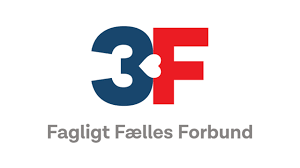The New York Times (NYT) has long been synonymous with high-quality journalism, pushing the boundaries of storytelling, and challenging conventional narratives. In recent years, “gutsy boldness” has become a defining feature of NYT’s editorial approach. This bold stance has redefined the role of media in speaking truth to power, confronting controversial issues, and standing firm in the face of challenges. In this blog, we will delve into the concept of “gutsy boldness” as demonstrated by the NYT, exploring its impact, notable instances of courageous reporting, and the broader implications for the future of journalism.
What Does “Gutsy Boldness” Mean in Journalism?
“Gutsy boldness” in the context of journalism refers to the fearless approach that media organizations take when tackling sensitive or controversial topics, often at the risk of facing backlash from authorities, readers, or other powerful groups. It’s about prioritizing truth, transparency, and accountability above all else. For the NYT, this concept has translated into reporting on critical issues, publishing opinion pieces that spark debate, and challenging the status quo, even when the consequences could be severe.
A Historical Perspective: The NYT’s Tradition of Courageous Reporting
The New York Times has a history of bold journalism, from the publication of the Pentagon Papers in 1971 to its in-depth coverage of the Watergate scandal. The Pentagon Papers, a top-secret Department of Defense study of U.S. political and military involvement in Vietnam, were published despite government attempts to block their release. This pivotal moment established the NYT as a beacon of press freedom and journalistic courage.
Key Highlights:
- Pentagon Papers: A landmark in the NYT’s history, this decision showcased the willingness to challenge governmental authority and expose uncomfortable truths.
- Watergate Reporting: Alongside other media outlets, the NYT played a crucial role in exposing the Nixon administration’s wrongdoings, emphasizing accountability.
Modern Examples of Gutsy Boldness at NYT
In recent years, the NYT has continued its legacy of gutsy reporting. Here are some prominent examples:
The #MeToo Movement
The investigative reporting by Jodi Kantor and Megan Twohey that exposed Harvey Weinstein’s decades of sexual abuse and harassment played a significant role in sparking the #MeToo movement. This was a prime example of gutsy boldness, as it required not only navigating legal and personal threats but also challenging a powerful figure with deep industry ties.
Reporting on the Trump Administration
The NYT took an assertive approach in covering the Trump administration, shedding light on contentious policies, conflicts of interest, and controversial statements. The paper’s investigative pieces, such as its examination of President Trump’s tax records, were met with resistance but underscored the importance of accountability in leadership.
Climate Change and Environmental Reporting
The NYT’s commitment to raising awareness about climate change has involved in-depth coverage of the scientific, political, and social aspects of the crisis. This has often meant challenging powerful corporations and government agencies with vested interests in downplaying the urgency of the problem.
The Role of Editorials in Redefining Gutsy Boldness
The NYT’s editorial board has also played a crucial role in defining gutsy boldness by issuing powerful opinions on matters like racial inequality, LGBTQ rights, and international conflicts. These editorials are not just about expressing opinions—they are carefully researched positions aimed at provoking thought and action.
Confronting Systemic Racism
In the wake of George Floyd’s death and the ensuing Black Lives Matter protests, the NYT took a strong editorial stance against systemic racism in the United States. The publication not only covered protests but also held institutions accountable, calling for systemic changes in law enforcement and public policy.
Advocating for Press Freedom
The NYT has consistently used its editorial voice to advocate for press freedom around the world, highlighting the dangers faced by journalists in countries where freedom of speech is suppressed. This advocacy is essential in a time when journalists face increasing threats globally.
Navigating Challenges: Backlash and Risks Involved
Taking a bold stance comes with its risks. The NYT has faced criticism from multiple fronts—be it political leaders, corporate entities, or its own readership. Here are some challenges the NYT has faced:
- Political Backlash: The NYT’s investigative stories, especially those involving powerful figures, have led to accusations of bias. During the Trump administration, the publication was often labeled as “fake news,” facing public attacks from the highest offices.
- Reader Division: In an era of polarized opinions, being bold can mean alienating segments of the readership. The NYT has had to balance between maintaining journalistic integrity and addressing reader concerns about perceived biases.
- Legal Threats: Publishing controversial pieces can lead to legal repercussions, which the NYT has not shied away from facing.
The Impact of Gutsy Journalism on Society
The “gutsy boldness” of the NYT has a broader impact on society:
Setting the Standard for Investigative Journalism
The NYT’s approach to reporting serves as a model for other media organizations, encouraging a culture of thorough investigation and ethical responsibility. It reminds journalists of their duty to hold the powerful accountable, regardless of the potential risks.
Empowering the Public
By taking on tough topics and providing in-depth analyses, the NYT empowers the public to be better informed. Whether it’s reporting on government corruption, corporate malfeasance, or social issues, the NYT’s work allows readers to engage with the world around them in a meaningful way.
Influencing Policy and Public Opinion
The NYT’s bold reporting has, at times, influenced public policy. Investigative pieces that reveal flaws in systems or abuses of power often lead to public outcry and, subsequently, policy changes. For example, the coverage of the opioid crisis in the United States contributed to greater awareness and changes in how the crisis is managed.
Critiques of the NYT’s Boldness: Balancing Objectivity and Activism
While many praise the NYT for its courage, there are critiques regarding how far the line between journalism and activism is blurred. Some argue that the NYT’s editorial positions may compromise its objectivity. However, advocates of this approach believe that in times of widespread misinformation and injustice, staying neutral can mean being complicit.
The Future of Gutsy Journalism
In an age where misinformation and polarized opinions dominate, the need for gutsy journalism is more significant than ever. The NYT’s boldness has set a benchmark for media organizations worldwide to pursue truth without fear or favor. The digital era also allows for greater reach, making the impact of bold reporting even more profound.
Challenges Ahead
- Misinformation and “Fake News”: Combatting the proliferation of misinformation remains a challenge. The NYT must continue to assert its credibility while addressing the skepticism of an increasingly distrustful audience.
- Digital Transformation: As traditional print media declines, the NYT must innovate to maintain its gutsy boldness in the digital space, using new technologies and formats to reach and engage readers.
Leveraging Technology for Investigative Reporting
Technological advancements can aid in investigative journalism. From data analytics to AI-driven research tools, the NYT and other media outlets have new opportunities to uncover hidden truths and present information in impactful ways.
The New York Times’ “gutsy boldness” represents the courage to confront powerful entities, challenge injustices, and empower the public with truth. From exposing systemic abuses to holding leaders accountable, the NYT has consistently demonstrated that journalism is not merely about reporting facts—it is about making a difference. As the media landscape continues to evolve, the need for fearless reporting remains ever crucial.
The NYT’s willingness to embrace this responsibility has not only solidified its position as a leading global news outlet but has also set a standard for journalistic integrity and bravery. The essence of “gutsy boldness” lies in prioritizing truth over convenience, ensuring that the stories that matter are told, and holding steadfast to the principle that an informed public is the cornerstone of a functioning democracy.
As we look to the future, it’s clear that bold journalism will be instrumental in shaping a more just and informed society. The New York Times, through its history and ongoing work, provides a shining example of what the press can and should be—unafraid, unapologetic, and relentlessly pursuing the truth.
Read more at https://forextradingboard.com/












